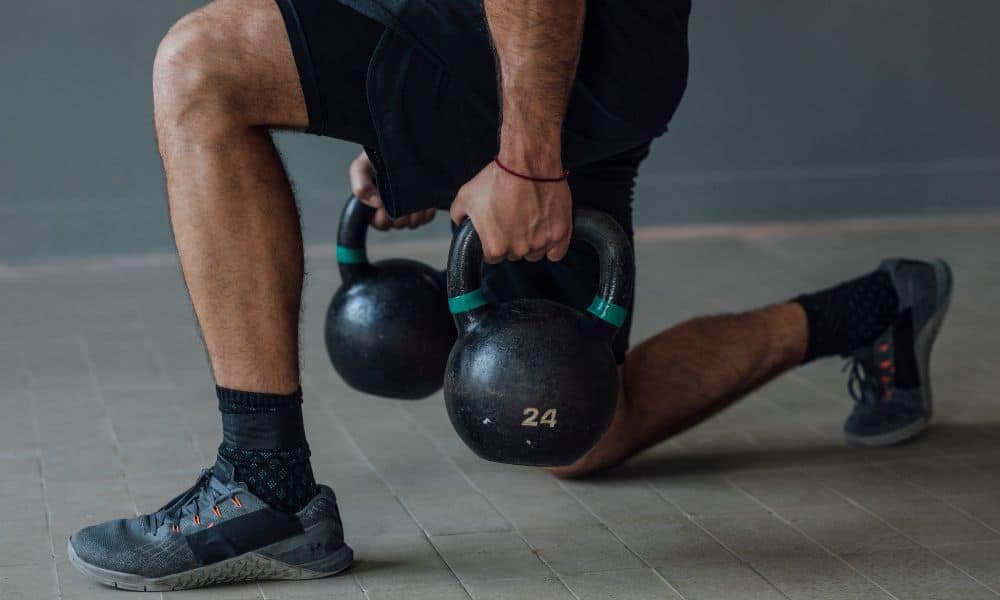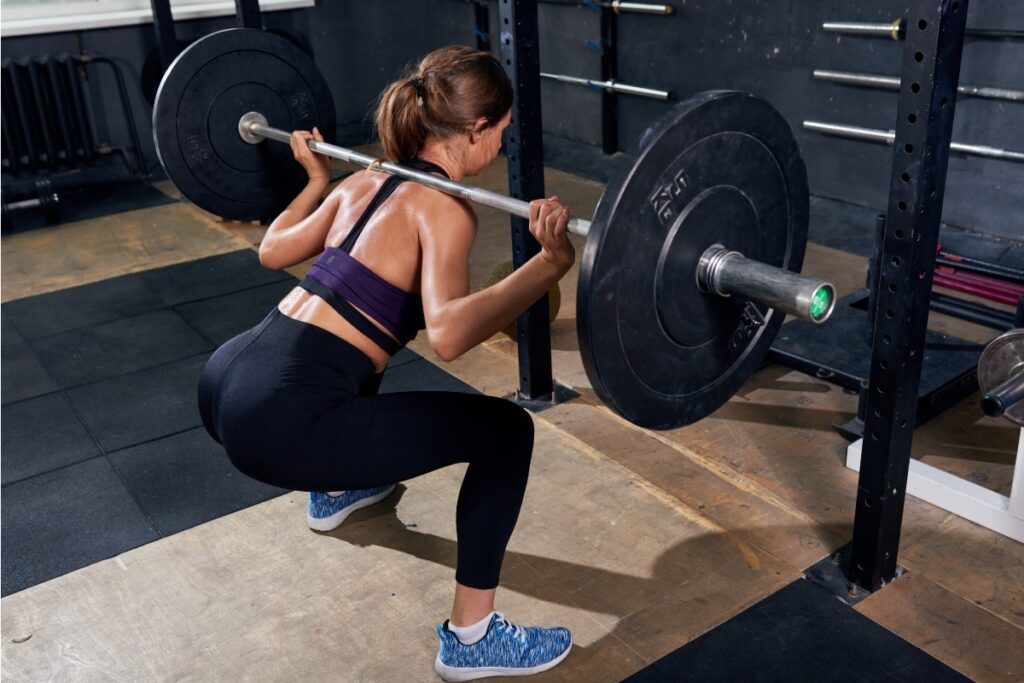The Split squat exercise is a staple of any strength training program. They’re an excellent way to build strength in the legs and core and can be used by nearly everyone, regardless of age or fitness level.
What Are Split Squats?
Your body weight is the only thing you need to perform this exercise. The Split squat exercise is a variation of the squat that targets your glutes, quads, and hamstrings muscles. The main difference between doing a split squat and regular squats is that you’ll be standing on one leg instead of two (hence “split”). There are many forms of the squat, including the back, front, pistol, jump, cossack, and box.
- Place one foot on a bench or chair in front of you, so it’s at least shoulder width apart from the other foot.
- Keep your back straight and core engaged throughout this entire movement.
Split Squat vs. Lunge: What’s the Difference
If you’re trying to determine how to do the split squat, let’s first get something straight: A lunge requires you to lift and move one of your feet vertically or horizontally. A split squat requires both feet to remain stationary during the exercise, much like a back or front squat. The only thing that will move during a split squat is bending the knee to a 90-degree position.
The split squat can be performed with one foot directly in front of the other and slightly outside shoulder width apart. The same goes for lunges. However, since lunging requires the feet to move while splitting does not (you have to bend both knees), most people need more practice before performing this exercise safely and effectively. In addition, many tend to overreach their range of motion when bending at the knees. More often than not, they go too far past what’s safe for their body type, frame type, or previous injury history.
An excellent focal point is not to extend the knee beyond the foot. Also, this is similar when performing the back squat. The knee can line up with the toes or slightly behind the toes but should never extend beyond the toes in any exercise. This can create instability in the knee and hip and lead to injury.
How to Do the Split Squat Exercise With Proper Form
- Tilt your torso forward at a 45-degree angle and keep it in this position throughout the entire exercise.
- Keep your back straight and chest up, which will help you maintain good form throughout the move.
- Please ensure that your knees are aligned with your feet (not too far forward or backward) so that they are not caving in or going past the toes of each foot during each repetition of this exercise.
How to Work out Safely and Avoid Injury
When performing the split squat, it is essential to use a challenging weight but not so heavy that it causes you to lose your balance. Make sure you keep your chest up and your back straight. Your knees should align with your toes, and ensure you use the proper form for this exercise. It’s also important to breathe correctly when exercising—inhale while lowering yourself down into position and exhale during the ascent portion of the movement.
Common mistakes to avoid
To ensure you perform the split squat exercise safely and effectively, avoid common mistakes. These include:
- You are arching your back. This will cause strain in your lower back muscles, which should remain neutral as you perform the exercise.
- As you descend into the squat or rise, you let your knees cave inward toward each other. This can be a sign of weak gluteus medius and minimus muscles at work in supporting the pelvis during movement—which may result in an injury down the road if left untreated! The best way to avoid this mistake with the split squat exercise is by keeping your feet wider than shoulder-width apart—this will allow more lateral shifting on either side of the center while keeping the torso upright.
- You let either foot off the floor when performing repetitions (even slightly). If you’re not lifting any weight with legs straight out behind you, then there’s no need to hold yourself up with your toes—just let them relax and rest flatly on the ground during a rest period between sets/repetitions! You’ll get plenty of cardio burn without having beat-up soles or blisters later on…and we don’t want anyone hurting themselves ahead of time, so let’s start practicing now 😉
Benefits
The split squat is an exercise that can help you improve your performance in various sports, from baseball to football. It’s also great for improving overall athletic performance and increasing muscle mass, strength, power, and flexibility.
- Improve overall athletic performance: This exercise improves balance, coordination, and agility. When you move quickly between positions on the court or field, these skills help you avoid injury by preventing overuse injuries such as stress fractures or tendonitis (swelling). These common injuries can occur when one part of the body works harder than others due to increased training loads without proper warm-up or stretching before exercise sessions.
- Increase muscle mass: The split squat exercise increases quadriceps strength because it involves using both legs independently instead of just one at a time like most other activities do; therefore, increasing resistance on each leg individually leads directly to more significant gains in strength when performing them correctly!
Movement Asymmetries
The first step to addressing muscular and movement asymmetries is ensuring you do the split squat exercise safely. This means that you must be aware of any injuries or conditions in your body and modify your split squat accordingly.
Some common mistakes that people make when performing the split squat include:
- You are using too much weight and unable to maintain proper posture throughout the entire range of motion. This can lead to injury and strain on muscles in different parts of your body (i.e., back pain).
- Performing the split squat exercise too quickly or using momentum instead of proper technique. This leads to compensation patterns in other joints, which may cause pain or discomfort down the road due to overuse/misuse of certain muscle groups, such as hip flexors, hamstrings, or quads, depending on the compensation patterns developed from these situations.”
Unilateral Hypertrophy and Strength
The split squat is a compound exercise that can increase your lower body’s strength, power, and size. It also offers a great cardio challenge if you add plyometric jumping. However, to get the full benefits of this exercise, you need to do it correctly!
Application to Sport and Human Movement
The split squat is an effective exercise to improve strength and power in the lower body. It can enhance performance in sports such as soccer, basketball, tennis, and other sports requiring quick direction changes or sprinting speed.
Split squats are also great for improving everyday life. It’s an excellent way to train your core while strengthening your legs and butt muscles. In addition, it will help you with activities like picking up heavy objects off the ground or walking upstairs without feeling tired!
The Last Word on the Split Squat Exercise
Split squats are a great exercise to build strength in your lower body. They also have the added benefit of working out your core because it requires you to balance yourself while performing them. If you or someone you know is considering bodybuilding, share this article on Facebook or Twitter so that others can learn more about building muscle.




